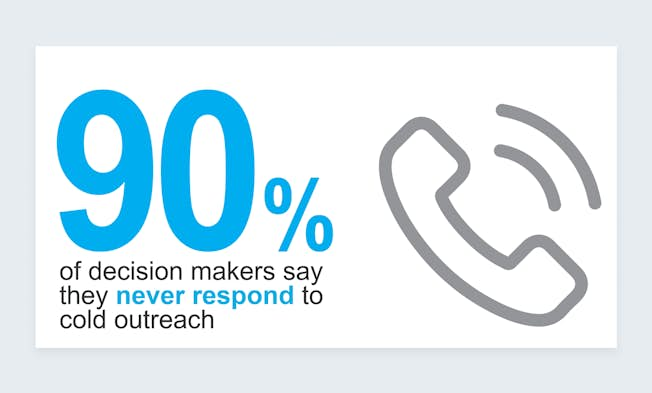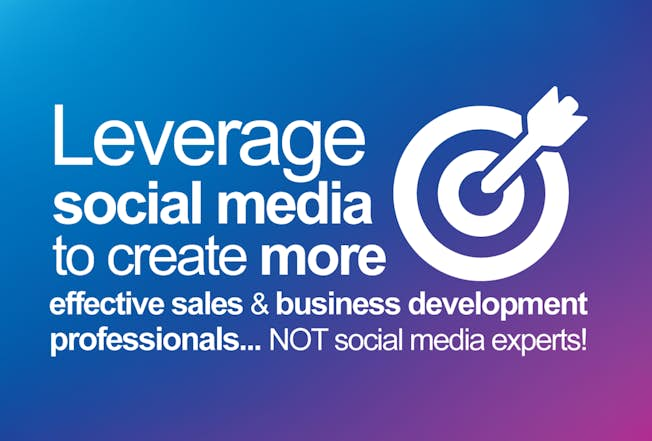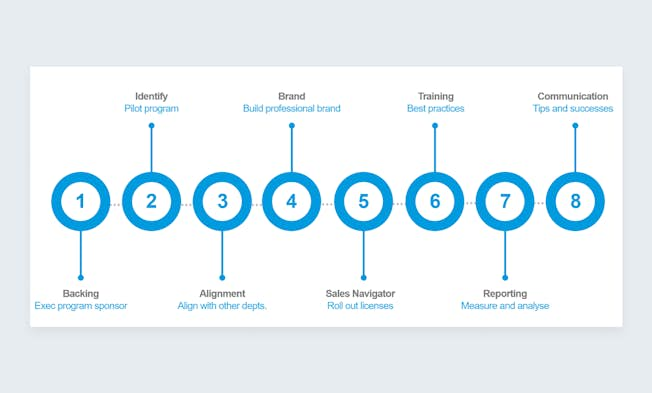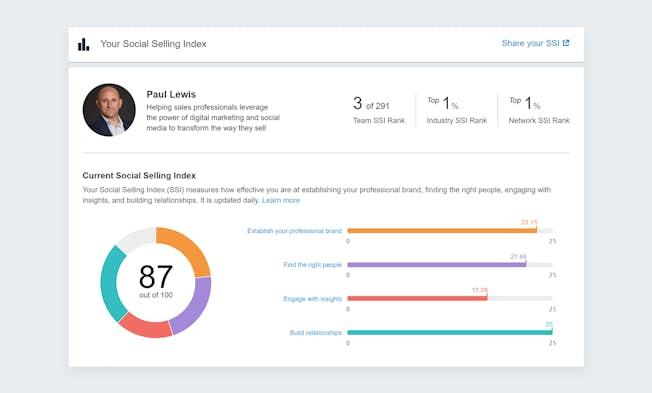Appearances can be deceptive. You probably know Pitney Bowes for print and mailing equipment – our name is synonymous with the franking machine/postage meter – but while mailing is still a big part of our business, that’s just a small part of what we do.
Today, Pitney Bowes has evolved to become a technology company that provides a portfolio of physical and digital solutions, all of which help power billions of transactions in the connected and borderless world of commerce.
I joined Pitney Bowes’ software business back in December 2013 to lead demand generation activities within EMEA. Operating in a highly competitive marketplace, we needed a new way to gain a competitive advantage in order to generate more sales leads.
Alongside traditional marketing tactics, our outbound sales process of conducting cold calling was simply no longer a viable sales strategy. Given that 90% of decision makers never respond to a cold outreach, we needed to find new ways to identify the right people at the right level within an organization, and establish contact with them.

The trigger, or lightbulb moment as some refer to it, came to me during our 2014 sales kick-off event. I was listening to a panel discussion session that featured a customer who mentioned that he started and ended his day on LinkedIn. The individual in question was the Chief Technology Officer of a large insurance company, based in Europe. Given that this was one of the key buyer personas we were targeting, this set the alarm bells ringing in my head as I began to ponder how many other senior and C-level executives like him were also using LinkedIn on a regular basis.
With social media increasingly empowering b2b buyers, and with LinkedIn at the time boasting 350 million members (it’s now c. 540 million), this was clearly a channel we needed to tap into; and thus, the Pitney Bowes social selling program was born. As I began to look into this further, it became clear that LinkedIn in particular (as well as other social networks) could be a great sales enablement platform for us to use.
At the time, Pitney Bowes had 11,500 employees with a presence on LinkedIn. When combined, this created a network of 1.3 million contacts we could tap into; and potentially, we could leverage this combined network to reach key targets within specific accounts.
I discussed the idea with our UK Sales Director, who bought in and agreed to act as an executive sponsor – a necessity if I was to get this program off the ground. I built a business case and produced a plan, which was presented to the VP of Sales. The plan outlined my ideas around a pilot program, detailing how I would train members of the sales team and provide ongoing support. It also highlighted how I would measure the program and demonstrate the ROI we could expect to see, given that I was also requesting funds to buy in a few LinkedIn (premium) Sales Navigator licenses, which I had used in a small capacity in my previous role.
With the plan approved and a small budget assigned, I was able to kick-start a pilot program and buy in six Sales Navigator licenses. The pilot was made up of four sales managers and two business development reps who had been identified within the Pitney Bowes software business. Each of the individuals already had a reasonable presence on LinkedIn, in terms of having 500+ connections, and a reasonably well built out profile page.
I was very vocal at the beginning that I was not in any way trying to turn these individuals into LinkedIn experts or social media pros, and that the primary objective was to demonstrate how social media – specifically LinkedIn – could be leveraged to help sales and business development team members be more effective in building a sales pipeline.

I began by working closely with these individuals, helping to optimize their LinkedIn profiles and aligning them to Pitney Bowes and the industry sectors they were focused on selling into. Next up was the task of building their professional brands and positioning each program member as a subject matter expert, while helping build their credibility and enhancing their visibility on the network. It’s worth noting that this takes time and is a continual process!
Step three was aligning the program with other teams, specifically marketing, CRM, and sales operations. Without this, the program was liable to fail; marketing’s role is to ensure the right amount of content is being created, and sales ops and the CRM team are required to help record the program metrics and measure the ROI.
Next was the task of educating and coaching program members around basic marketing and engagement techniques and LinkedIn best practices, such as personalizing connection requests. I then moved on to training program members on working with their assigned LinkedIn Sales Navigator licenses, highlighting the many features and functions offered.
Having started the pilot program in February 2014, we began to see the fruits of our labor after just five months, and in September 2014 we recorded our first business win that could be attributed to social selling tactics. From then on it was a continual process of working alongside these individuals, helping to build a sales pipeline and accelerate the sales process.
At this time, I began to communicate details of the program, and the successes we were seeing, out to the organization; this sparked interest from others and, as a result, the program began to scale. I also started to capture the stories behind the successes and document the tactics we were employing, which helped showcase how LinkedIn was being utilized as a sales enablement tool.
Other senior executives started expressing their interest and enquiring as to how their sales team could join the program. Having stated out with a pilot of six initial members, the program began to scale and by the end of the first year we had 25 fully-fledged social sellers.

I started to produce reports on a regular basis to justify the ongoing investment in licenses and training. These reports highlighted usage metrics around Sales Navigator, in addition to sales pipeline opportunities and wins influenced by social selling. Campaign codes have been created and program members are required to append these codes to any lead/opportunity they generate as a result of the program. This ensures the program has full visibility, allowing anyone to view the latest numbers within our CRM system.
Taking this a step further, I began tracking the Social Selling Index (SSI) score of each program member. The SSI monitors each person’s activity on LinkedIn and scores them out of 25 in four distinct categories, giving a cumulative total out of 100. According to LinkedIn, SSI leaders are 51% more likely to achieve quota, and I’ve been able to correlate this back to Pitney Bowes; those who are achieving a high SSI score are those who are generating sales leads/opportunities and closing business as a result of the time they are investing in using LinkedIn and Sales Navigator.
To appeal to the natural instincts of a salesperson, I’ve gamified the program and now reward the individual who achieves the highest SSI score each month with an Amazon gift card. In addition, I also reward one program that generates a business win each month with a more substantial prize. This prize is awarded not to the individual who records the highest value win, but to the individual who has the most interesting and innovative story behind the win.

As of today, the social selling program at Pitney Bowes now has more than 300 program members spanning different counties and business units. The program has helped generate over $10m in revenue over the past five years, ranging from the sale of traditional mailing equipment through to software solutions that have changed the ways companies engage with their customers.
Social selling has become a game changer in the way we conduct research, gather intelligence, identify key decision makers, and prospect named accounts. It’s helped to transform our sales processes, reduce the sales cycle, and has become part of a salesperson’s daily routine.
Upgrade to Power Membership to continue
your access to thousands of articles, toolkits, podcasts, lessons and much much more.
Become a Power Member- Login
- View Courses
- - - -
- Courses
- Resources
- - - -
- My Account
- Change Password
- Logout





